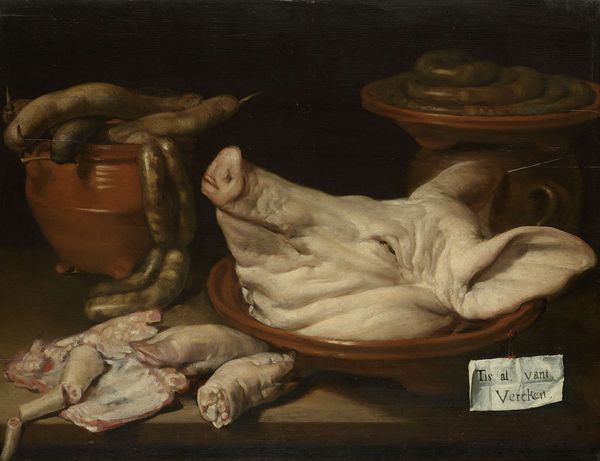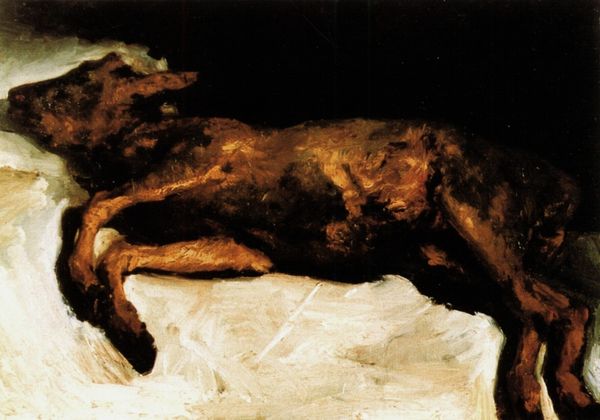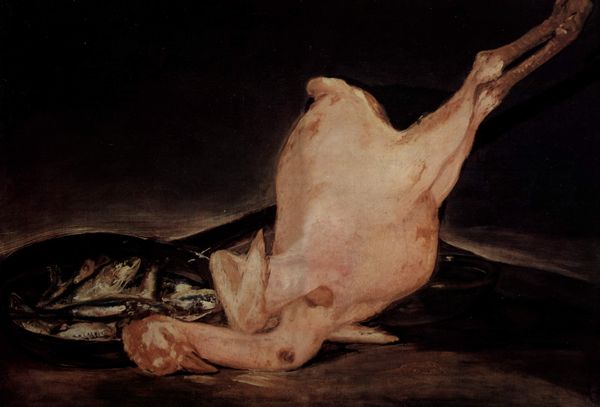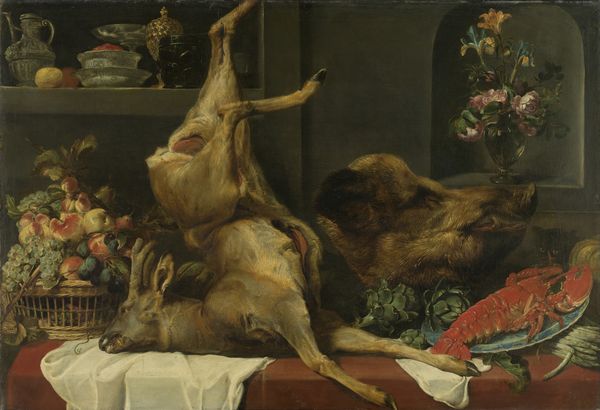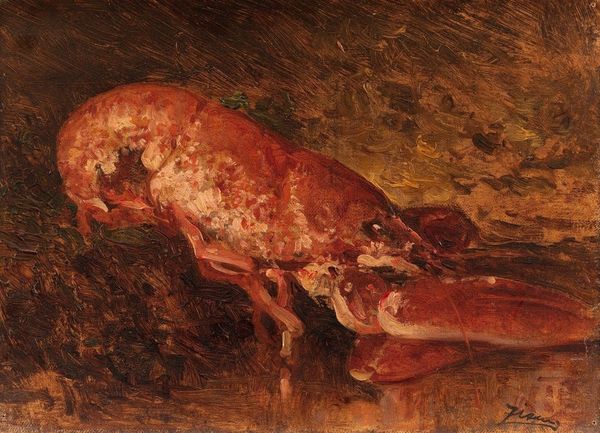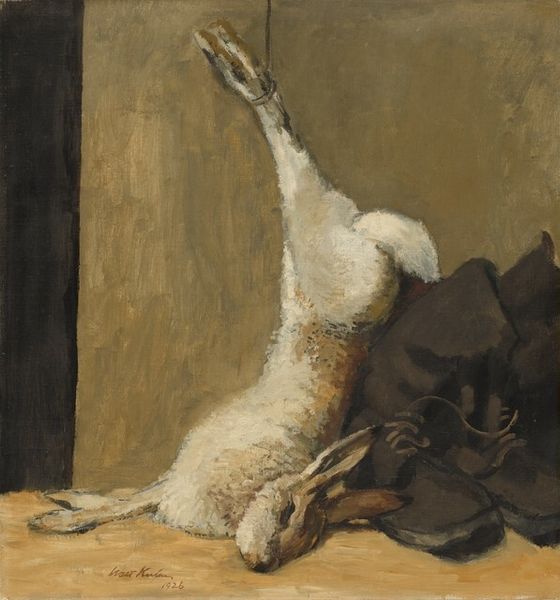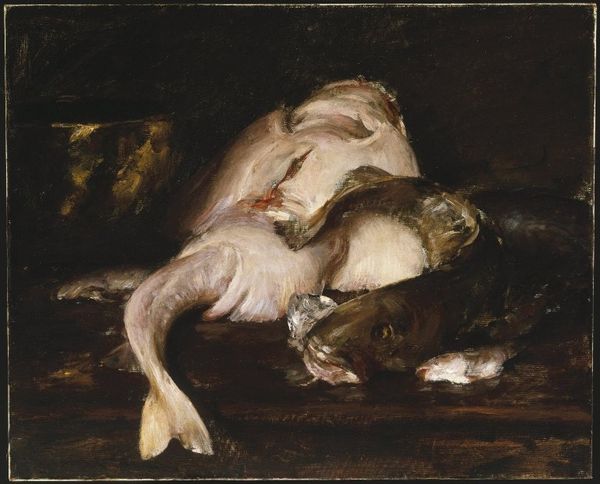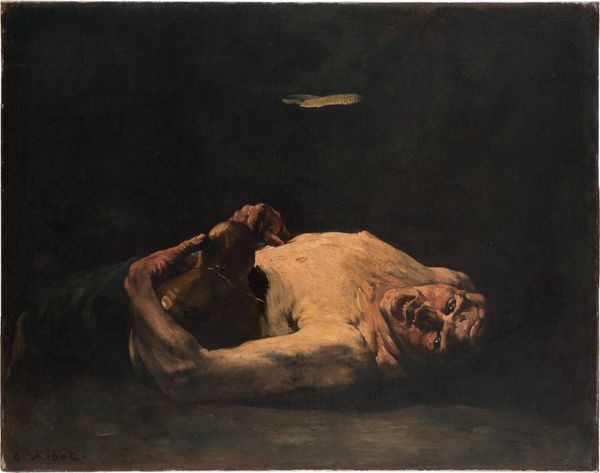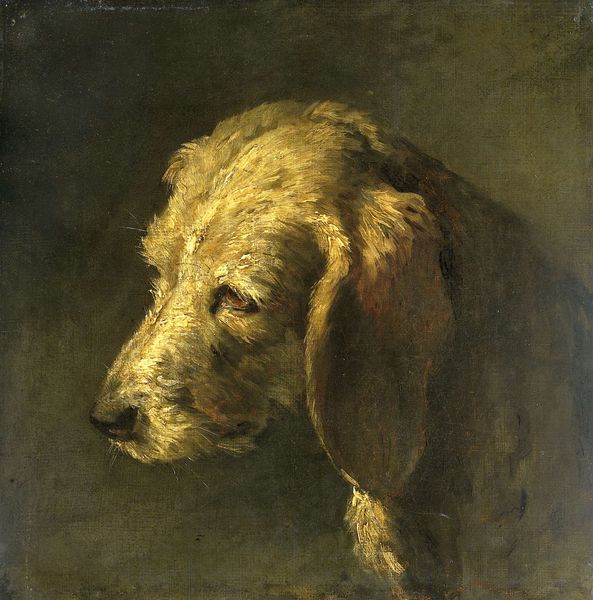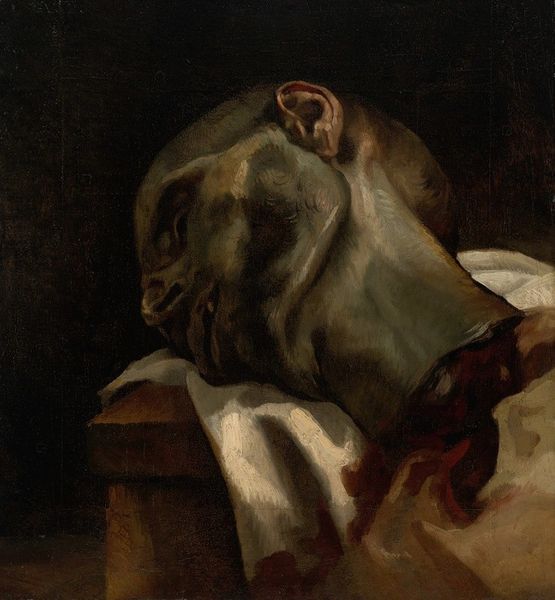
Dimensions: 57.1 cm (height) x 70.6 cm (width) (Netto), 75.2 cm (height) x 89.5 cm (width) x 7.3 cm (depth) (Brutto)
Editor: So, this is Felice Boselli's "Skinned Head of an Ox," painted between 1688 and 1691. It's a stark, somewhat gruesome oil painting. What's striking to me is how…present it feels. Like an effigy or a relic, I am just surprised it feels so symbolic rather than repellant. What do you make of it? Curator: That presence, as you call it, is key. Heads, particularly animal heads, carry immense symbolic weight across cultures. Consider ancient sacrificial rites. Do you see how Boselli captures the transition – life becoming…other? Editor: It's in the eye, isn't it? Still gleaming, yet devoid of understanding. Is that why the single horn stands out, too? Almost mocking death? Curator: Potentially. Or consider the horn as a signifier of power, virility—qualities negated by death, yes, but also lingering as a trace of the ox’s prior existence. The bloodied surface also contributes, evoking the act of violence, of transformation and it points us to another important art historical practice. Editor: Still life painting! I hadn't made that direct connection. Is that to invite some comparison to something like Jan Davidsz de Heem? Is there a suggestion of fleeting pleasures that art historians refer to as "vanitas"? Curator: Precisely. And more than fleeting pleasure. A still life usually has something of domestic comfort or beauty to show but here the symbols may instead evoke deep feelings of cultural guilt for a dependency on animal life. So what feelings linger after your time spent with Boselli? Editor: I now recognize that while unsettling on the surface, this work possesses layers of meaning about how different forms of life and even memory are circulated, and captured within different forms of preservation and consumption. Fascinating. Curator: Exactly! It shows us how something seemingly repulsive can be deeply reflective of how memory and emotion take shape in human culture.
Comments
statensmuseumforkunst almost 2 years ago
⋮
Boselli records even the smallest detail with his rapid, nervous brushstrokes: the long, coarse eyelashes, the raspy texture of the tongue and the flap of skin left behind after the cut-off ear. The restricted colour scheme consists only of black, white and earth tones. There is no visible source of light; the darkness closes in on the head and keeps our gaze firmly fixed there. Other typical traits include the pastose highlights in the white fatty tissue and the exposed tooth; today it glistens in artificial spotlights, but back then it would have shone in daylight from studio windows. Such chiaroscuro brilliance was a much-praised painterly effect during the Baroque era. This painting is one of Boselli’s few oil sketches done after the life. It was not intended for sale, but as part of the artist’s own private collection of “patterns” that could be used over and over.
Join the conversation
Join millions of artists and users on Artera today and experience the ultimate creative platform.

